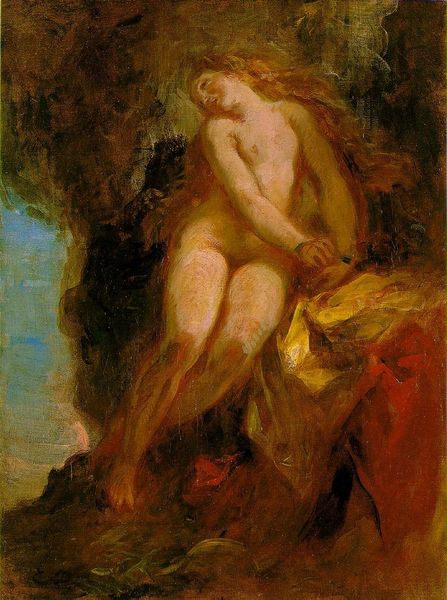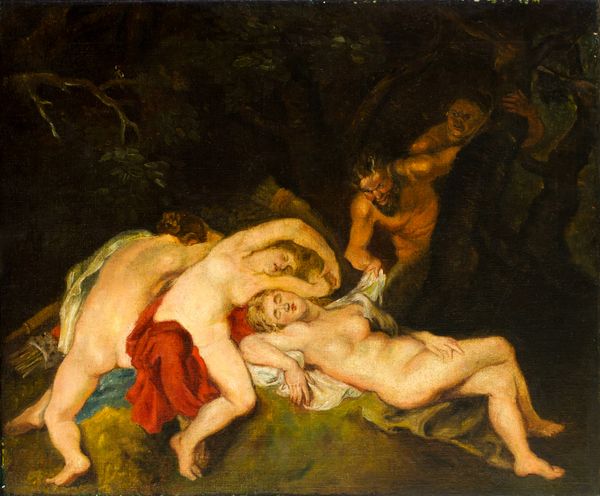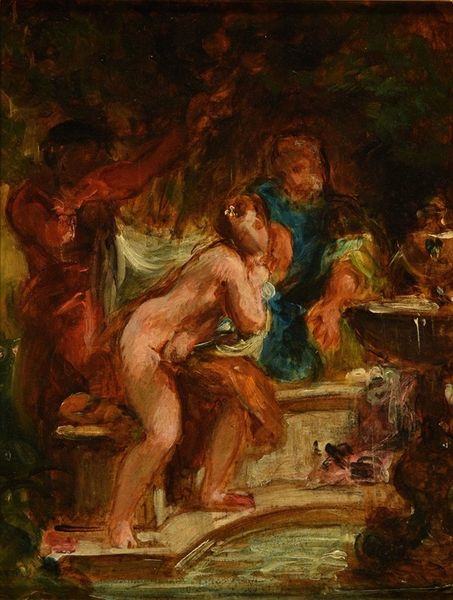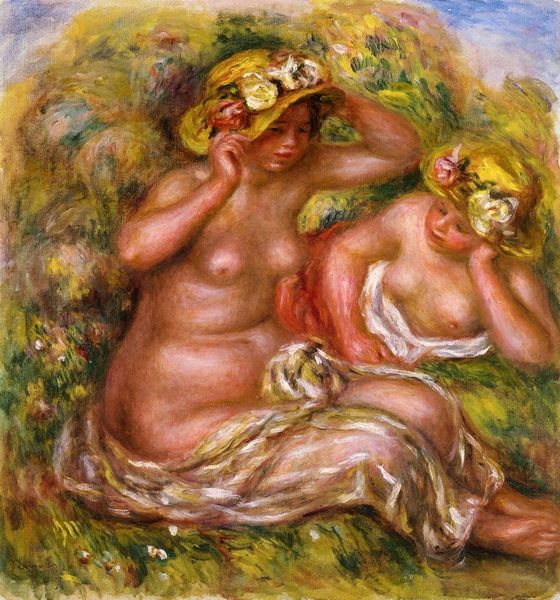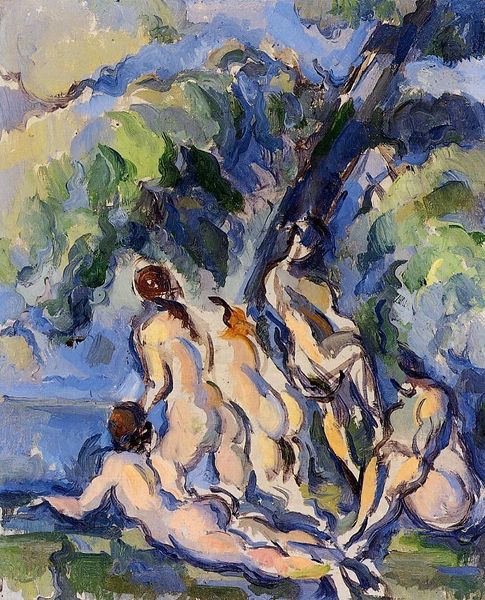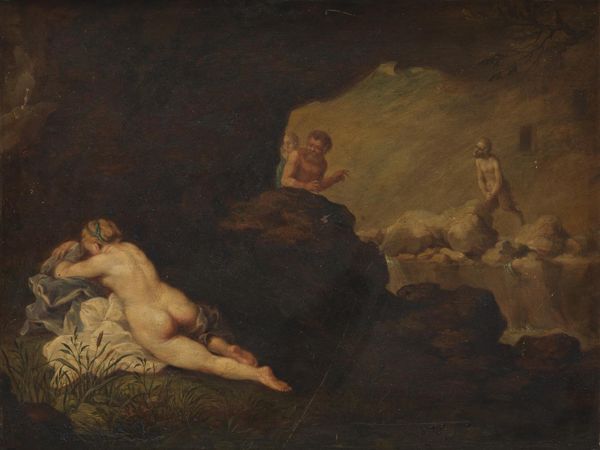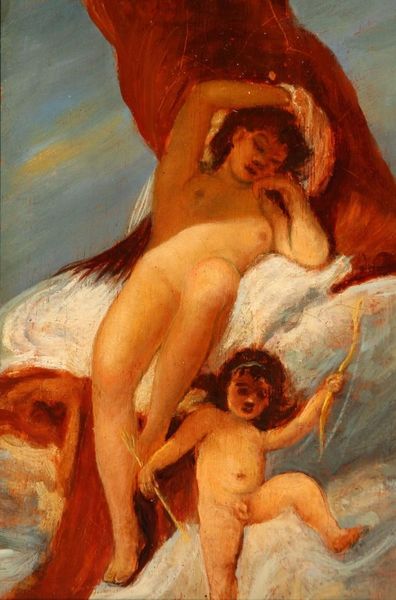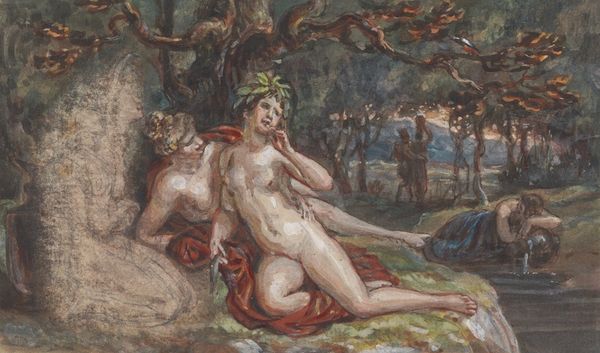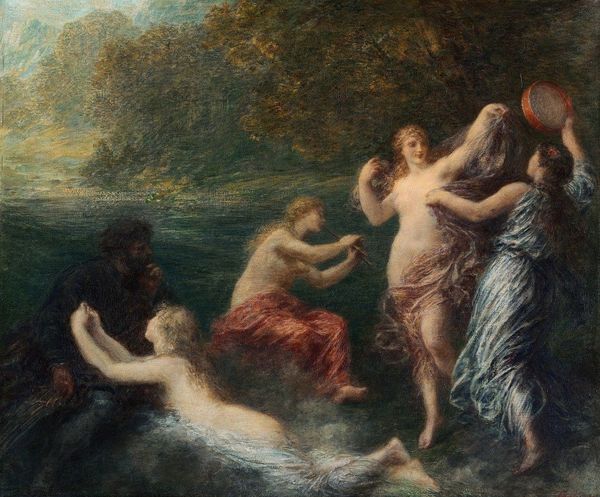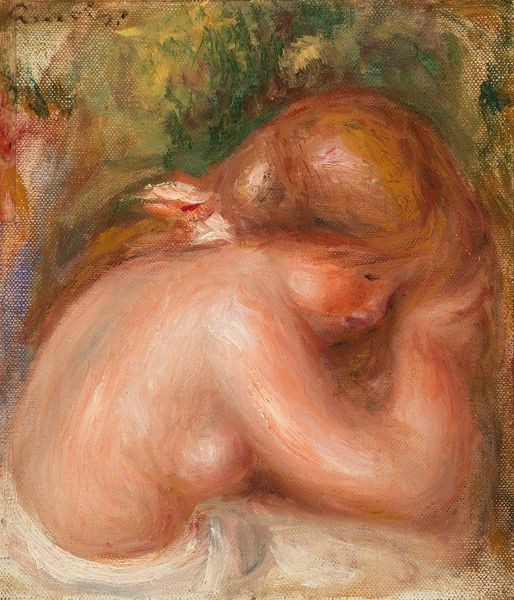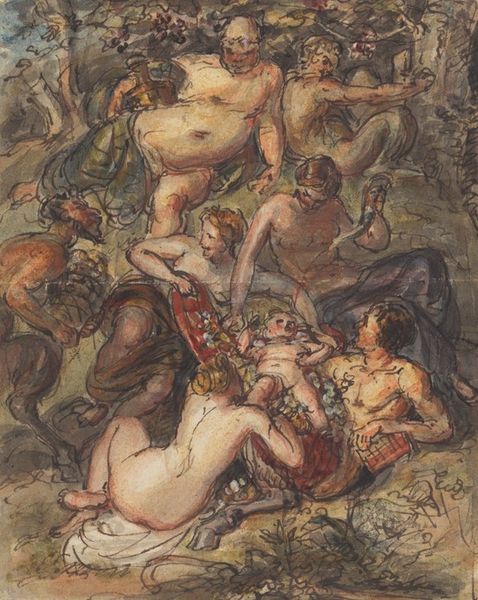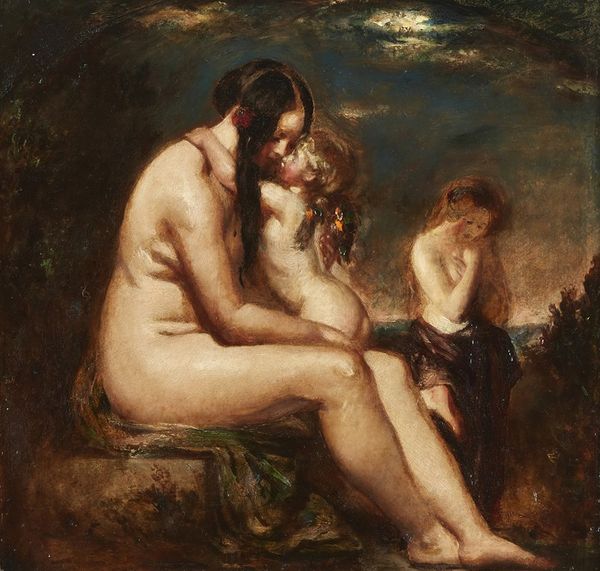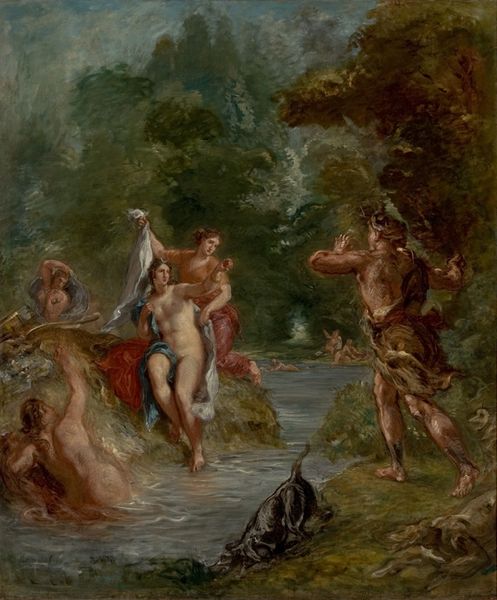
Copyright: Public domain
Paul Cézanne made this oil painting of Nereids and Tritons, but the exact date remains unknown. The painting depicts classical mythological figures in a landscape. It's worth noting that in nineteenth-century France, state-sponsored art academies shaped artistic taste, often favoring historical and mythological subjects like this one, and it was commonplace for art like this to be made. However, unlike some of his contemporaries, Cézanne’s loose brushwork and unconventional compositions challenged academic norms. The work hints at broader shifts occurring at the time within artistic institutions, such as the rise of independent exhibitions as alternatives to official salons. To understand paintings like this, we can refer to exhibition reviews, artists’ correspondence, and patronage records that help uncover the complex web of social relations that shaped its meaning. This is how we understand art as a product of its time, reflecting changing cultural values and institutional structures.
Comments
No comments
Be the first to comment and join the conversation on the ultimate creative platform.
